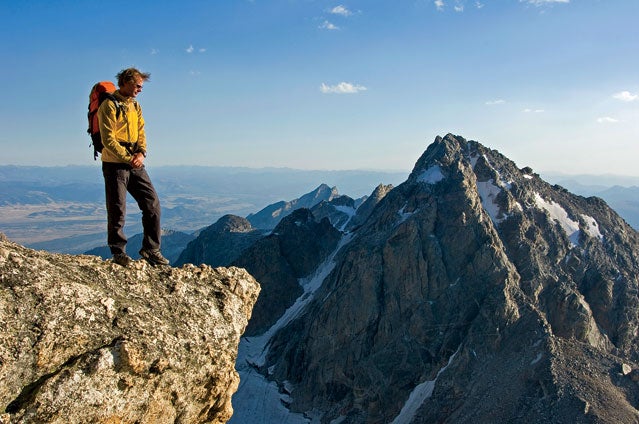Step one: Read the essential texts. , who leads The North Face’s dream team of globetrotting expeditionists, recommends . First published 54 years ago by climbing club in Seattle, the how-to guide is widely considered mountaineering’s bible. Anker calls it “the most comprehensive tome on climbing.” Freedom is packed with lessons for the beginning climber, including sections on equipment, knot-tying, belaying, rappelling, and basic technique.
���ϳԹ��� Magazine, December 2005
 Alpine Altruist Conrad Anker
Alpine Altruist Conrad AnkerAnker also points to the climbing books published by FalconGuides, which vary in focus from the instructional (; ) to the geographical (; ).������
But as the intro to my dog-eared copy of Freedom says, “Mountaineering cannot be learned just by studying a book.”
To get started on the rocks, Anker suggests joining a regional or national climbing club. He lists the aforementioned Seattle outfit, as well as Iowa Mountaineers, Chicago Mountaineering Club, Mazamas in Portland, and the (based in Golden, Colorado)—all of which are beginner friendly. “These groups offer a great way to learn from experienced leaders and meet new people,” says Anker.
The Chicago group, for example, takes monthly trips to an area climbing gym to keep experienced members in practice in the winter and to give newbies access to lessons form certified instructors (Vertical Endeavors, it should be noted, also offers outdoor classes year-round).
National outfits such as the American Alpine Club often have regional chapters around the country, which give members access to a wide social and instructional network. AAC members also receive a $10,000 rescue benefit package, 20 percent off everything from Patagonia.com, free guidebooks, and access to the club’s expansive lodging network.
���ϳԹ��� of the club scene, another option for wannabes—especially those with disposable income—is to take a class at a mountaineering school. —frequently lauded by this very magazine—offers a four-day “Intensive Introduction” to outdoor rock climbing at locations around the country, including Washington and California. For $775, students learn to belay, rappel, and set up single-pitch top-rope systems for one of the most transcendent experiences in outdoor recreation: the independent climb.


